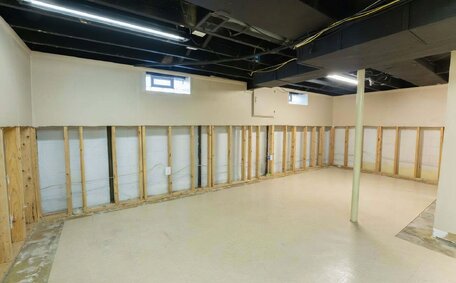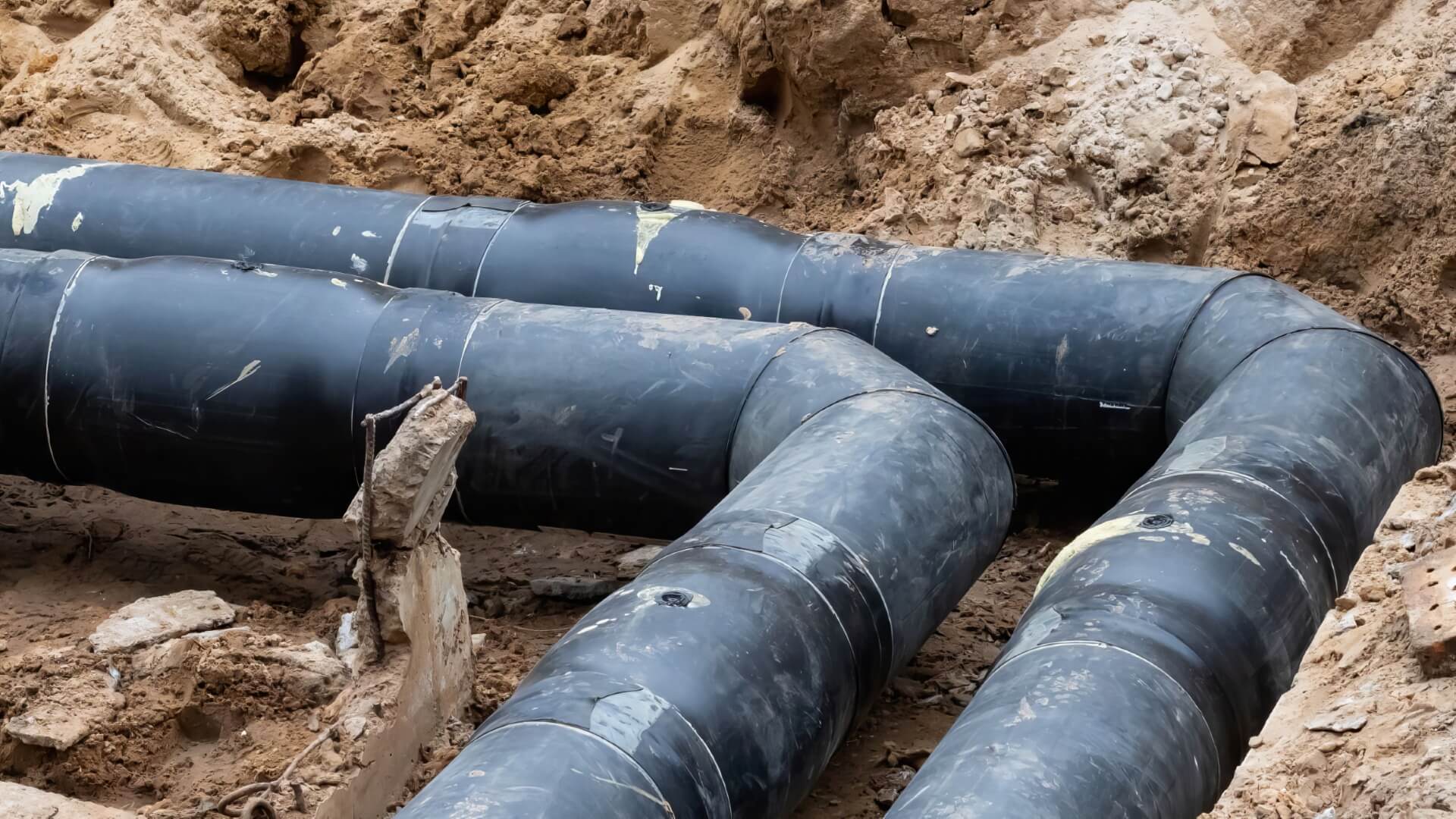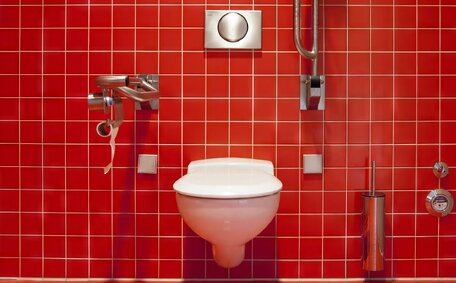Introduction to Garbage Disposals
The garbage disposal unit is a common kitchen appliance located under the sink, integrating seamlessly into your kitchen. They provide a convenient way to grind up and dispose of food scraps, helping to keep sink drains clear. However, like some other appliances, garbage disposals need proper maintenance and care to safeguard your drains.
Regular cleaning is crucial for maintaining your garbage disposal unit effectively. Over time, food particles, grease, and other debris can build up inside the grinding chamber. To clean your disposal and wash away food particles, run cold water through the unit.
Exercise caution and avoid putting fibrous foods into the disposal to prevent blade damage and clogged drains.
Monthly, deep clean with a baking soda and vinegar mix, ensuring the power to your disposal is switched off. You can also use occasionally grind some items such as ice cubes, salt or lemon peels to help sharpen blades and leave your disposal smelling fresh.
Overall, just be mindful about what goes into your garbage disposal, sticking to a garbage disposal cleaning routine. Follow a regular cleaning routine and avoid putting in items that could clog pipes or damage parts. Proper care means you should clean your garbage disposal regularly to keep it running smoothly for years to come.
How a Garbage Disposal Works
A garbage disposal, installed under the kitchen sink, connects directly to the drain pipe.
Within your disposal, a motor spins a disc outfitted with sharp blades that pulverise food scraps. When you can turn the disposal on, the motor spins rapidly, grinding food waste into tiny particles that can pass through your plumbing pipes.
Here’s a comprehensive guide on how clean your garbage disposal with practical steps:
- Leftover food scraps and particles are scraped off dishes or put into the garbage disposal.
- The drain stopper is removed and cold water is run.
- The disposal is activated, or turn disposal on either by a wall switch or when a sink stopper is engaged.
- The spinning blades pulverize the food particles and propel waste down disposal while the water flushes it away.
- The food particles are ground small enough to easily pass through your pipes in the household plumbing.
Your garbage disposal is designed for convenient everyday use. With tips maintaining like regular cleaning and avoiding jams, they can operate smoothly for over 10 years. Understanding how to use your garbage disposal unit functions is key to effective use and maintaining a neat kitchen.
Cleaning Garbage Disposal Blades and Interior
Efficiently cleaning your disposal unit’s blades and interior is essential to maintain functionality and prevent jams. Over time, grease, food particles, and other debris can build up on the blades causing them to become less effective at grinding and more prone to corrosion.
An accumulation of gunk down your disposal’s chamber can also impede the unit’s grinding performance.
Follow these steps to clean the blades and interior of your disposal unit:
- Unplug the garbage disposal or switch off power at the breaker box before starting the disposal cleaning.
- Place a bucket under the sink to catch any water down from the sink.
- Remove the rubber splash guard to clear up any obstructions at the top of the sink opening.
- Look down into the disposal with a flashlight and Use tongs to pull out any large debris down garbage disposal.
- Scrub the interior chamber with a sturdy scrub brush. Use an old toothbrush and soapy water with baking soda to cleanse your disposal.
- Scrub the blades by inserting half a lemon and rotating it against the blades.
- Rinse thoroughly pouring water into the drain until the chamber is clear of debris.
- Replace the splash guard.
A thorough cleaning procedure of the blades and chamber once every two months will keep your garbage disposal in good working order when turned off. Be sure to unplug the unit in need clean before putting your hands inside to avoid accidental activation. With regular cleaning and avoiding jams, you can keep your disposal working reliably for over a decade.
Using Ice to Clean anrbage disposal. Here’s how it works:
- Start by filling your sink with cold water and turning on the garbage disposal.
- Slowly add 2-3 cups of ice cubes to the running water. Don’t dump them in all at once.
- As the ice cubes tumble around in the churning water, they will help scour the inside of the disposal, removing gunk and buildup.
- The ice cubes also act as a gentle abrasive on the blades themselves, polishing away tiny nicks and restoring sharpness.
- For extra cleaning power, you can add some rock salt or lemon wedges in with the ice.
- Let the disposal run for 30 seconds after all the ice has been processed to rinse away debris.
Regular cleaning with ice helps keep your disposal blades sharp and extends their lifespan. Always ensure the disposal unit is off before cleaning to prevent jams. An occasional cups ice cleaning will keep your unit running smoothly for years.
This method simplifies garbage disposal maintenance, making it an efficient and cost-effective home improvement task.
Baking Soda and Vinegar Treatment
Pouring baking soda followed by vinegar effectively deodorises and cleans your disposal. Here’s a simple process on how to clean effectively:
- Start the cleaning by carefully measuring about cup baking soda into the disposal.
- Continue pouring vinegar into the disposal, 1 cup of white vinegar will bubble as it dissolves residue.
- Let the mixture work its magic off disposal for 5-10 minutes, then turn garbage disposal on and run the water.
- Let water flow and turn your disposal on for 30 seconds to thoroughly flush away debris.
The acerbic nature of the vinegar intermingles with the alkalinity of the baking soda to get rid of grime. The natural cleaning powers of baking soda and vinegar will keep your disposal grinder clean.
This treatment also neutralises odours and freshens the drain. Just avoid using boiling water, as this could damage parts. For best results, do this treatment once month.
Preventing Clogs and Jams
To understand how clean garbage disposal and prevent clogs, avoid depositing certain foods down the drain. Here are some Implement these strategies for a clean garbage disposal:
- Avoid any food that is fibrous like corn husks, celery, onion skins, and artichokes.
- Don’t let starchy foods like rice, pasta, or potato peels go into drain the disposal.
- Cut up or grind hard items like bones or fruit pits into pieces small enough for into garbage disposal.
- You don’t need to dispose of coffee grounds, grease, or egg shells down the drain.
- It’s imperative to run cold water before, during, and post disposal use to assist in flushing away particles.
- Consider catching food scraps in a strainer in the sink drain and emptying into the trash.
Also, inspect your disposal for obstructions if you hear grinding or humming noises when it’s running but not processing food. You can try using a hex wrench or Allen key to manually turn the blades and dislodge jams. But never put your hand in a running disposal!
With mindful use and avoiding fibrous or starchy foods, you can prevent most clogs in your garbage disposal. Cold water flushing and regular cleaning will also keep things running smoothly.
Run Plenty of Cold Water When Grinding
It is highly recommended to use cold water abundantly when operating your garbage disposal. Cold water helps move food waste through the grinding chamber smoothly and efficiently into unit. It also solidifies any greasy residue, allowing the blades to chew through it more effectively when you follow these steps.
Follow these tips for using cold water with your disposal:
- Always run a strong flow of cold water for a few seconds before turning on the disposal. This primes the chamber.
- Maintain a steady flow to run water while grinding food particles to ensure smooth operation. Don’t turn off the tap until the grinding noise stops.
- Run your water for more than 30 seconds after shutting off the disposal. This flushes away any remaining particles.
- Avoid using hot water, as this can liquefy greases and cause buildup. Hot water can also damage components.
The constant flow of cold water helps keep running smoothly by creating a hydraulic flow that pushes particles down the drain. It also prevents jams by keeping waste from sticking to chamber walls. Make running cold water an essential part of your garbage disposal operation.
Unjamming a Clogged Disposal
A clogged garbage disposal is inconvenient, but often you can clear the jam yourself without calling a plumber. Here are some tips for unjamming a clogged disposal safely:
- Before clearing a jam, ensure your garbage disposal is switched off at the circuit breaker.
- Place a bucket under the sink to catch water and debris.
- Also use tongs or pliers to try extracting debris through the drain opening.
- Insert an Allen wrench or special jam release tool into the underside and rotate back and forth to dislodge any pieces that get stuck.
- Attempt pressing the reset button on the base of the unit if your model has one, to clear down garbage effectively.
- Pour salt ice cubes down the drain and let sit for a few minutes before running cold water.
If you still can’t clear the jam, turn the power back off and carefully remove the garbage disposal if you can access the mounting. Inspect the interior with a flashlight and use needles or wire to poke free any lodged items. Be sure to wear gloves for protection when you need pieces to come out.
For severe jams, it’s often easier and safer to call a professional plumber. Persistent grinding noises when the disposal is turned on likely indicate the need for service. But in many instances, you can provide your own garbage disposal help by unclogging it at home with patience.
When to Call a Professional
While many clogs and jams can be addressed with DIY methods, there are times when it’s best to call in a professional plumber for garbage disposal repairs or replacement. Seek professional help if:
- The unit remains jammed despite applying unjamming techniques.
- There are recurring clogs that keep happening despite attempts to clear them.
- You hear loud grinding noises even when not operating the disposal.
- There are leaks coming from the unit, especially at the fittings under the sink.
- The disposal trips the circuit breaker when turned on or emits a burning smell.
- The reset button doesn’t restart the disposal once popped.
- Blades appear broken or chipped upon inspection.
For significant issues or complete disposal replacements, trust the experts at St Peters Plumbing in Sydney. With over 15 years in the plumbing heating business, we can troubleshoot any issue and get your system operating smoothly. Call us at 1300 349 338 or submit your name email at jobs@stpetersplumbingservices.com.au for prompt, professional assistance.
There are recurring clogs that keep happening despite attempts to cleaips the circuit breaker when turned on or emits a burning smell.Replacing Worn Parts and Motors
Signs that blades, bearings, or other internal components need replacing include loud grinding noises even when not in use, the motor humming but the blades not spinning, water leaks, frequent jamming, or the unit repeatedly tripping your electrical breaker.
Replacing worn-out parts can often extend the lifespan of your disposal rather than needing a full unit replacement. Components commonly needing replacement include:
- Bearings - Worn bearings lead to noisy operation and reduced grinding power.
- Seals - Leaking seals allow water to drip from the base of the unit.
- Motor - A worn motor has reduced grinding torque.
For major home repair, it’s often better to hire a professional plumber. They can properly diagnose issues, replace damaged parts, and perform complete motor swaps if needed. With regular maintenance and replacing worn components, a quality garbage disposal can operate smoothly for 10-15 years.
Blades - These sharpened discs grind food





